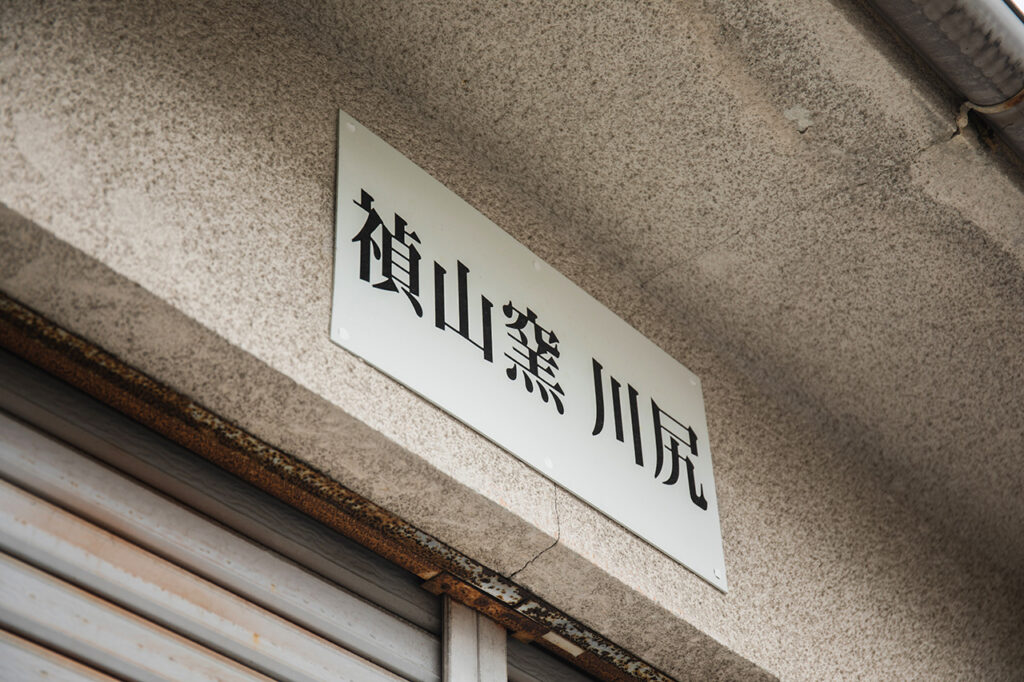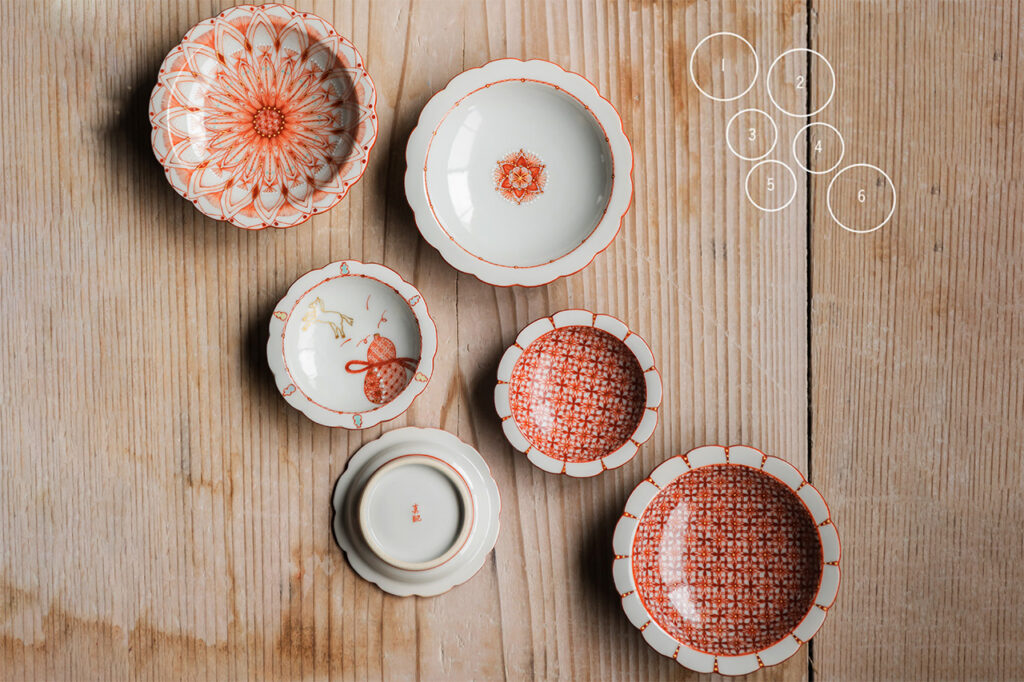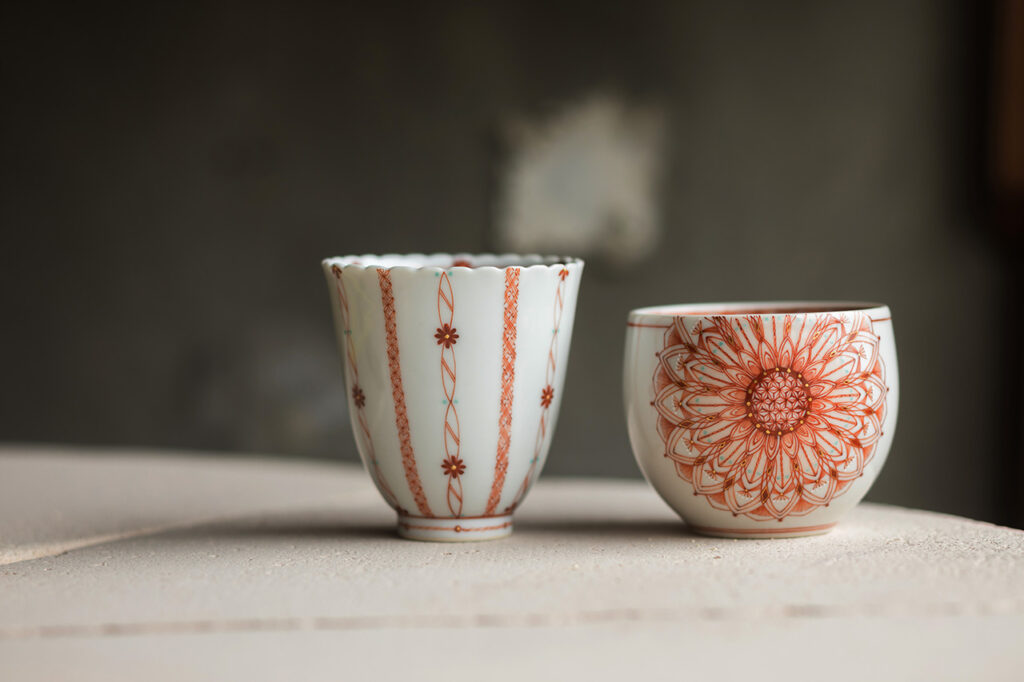
The blue colors of the Uoun Kiln by Taro Yamamoto / Utsu...


We spotlight people who make things in Kyoto and introduce their thoughts and works. This time, we introduce Maki Taneda, a rare artist in Kyoto, who works with Kutani Yaki porcelain in fine red enamel painting. Her fine brushwork and unique expressions that carry on the tradition are attracting attention.
Akae hosoge, or red enamel fine painting, is a technique of Kutaniyaki that has been used since the Edo period (1603-1868) in Ishikawa Prefecture. This is an overglaze painting technique of Kutaniyaki that has been used since the Edo period in Ishikawa Prefecture, and the world created by advanced craftsmanship is unintentionally fascinating.


Maki Taneda makes her red-painted fine-painted vessels at the Teizangama Kiln, a cooperative studio located in a residential area of Imakumano, where pottery studios have been dotted for centuries. Rather than the gravity of traditional techniques, Ms. Taneda's works have a somewhat dainty atmosphere that is familiar to the viewer.

Maki Taneda was born in 1978 in Gifu. After graduating from university, she worked at a department store for 6 years and graduated from Kyoto Traditional Crafts University in 2008. Studied under Yoshitake Yamamoto and became independent in 2013. Currently works at Teizangama Kiln.

Mr. Taneda is from Gifu Prefecture and has a unique background, having worked at a department store in Nagoya after graduating from university. His first inspiration to become the ceramic artist he is today was a trip to Kyoto.
When I was developing a desire to learn a craft, I happened to visit the Kyoto Traditional Crafts Museum and learned that there was a school where one could study crafts. So a few years later, I quit my job, moved to Kyoto, and enrolled in the Kyoto Traditional Crafts University," says Taneda. His first encounter with akae hosogaki was in a design class at the school. The patterns on the pieces looked so cute, and it was love at first sight," he says. I went to a kiln in Ishikawa Prefecture and apprenticed myself to Yoshitake Yamamoto, a master of the akae hosoge tradition, to learn the technique.

From the top, the pattern around the snow pattern is inspired by a series of snow flower buds. The rim is decorated with a rhodium-plated pattern in the motif of ornaments. The 4" chrysanthemum flat dish with snow design in fine red glaze, 12,100 yen, and the 6" chrysanthemum flat dish with snow design in fine red glaze, 15,400 yen.

After five years of training, Mr. Taneda became independent. After returning to Kyoto, he joined Teizangama Kiln, the current joint studio, through a chance encounter. Using a red pigment containing iron called bengara, he draws lines thinner than a human hair with an ultra-fine brush at intervals of less than a millimeter, which is nothing short of magnificent.




Many of the pieces in the akae hosogaki line, such as incense burners and decorative platters, are not suitable for everyday use, but my goal is to create vessels that can be used in everyday life. I would be happy if people think it is cute," says Taneda. She is conscious of designs that suit modern life, adding her own unique twist to classic patterns and making use of the blank spaces without overdrawing. Her signature flower and snow patterns, which are created by combining straight and curved lines, have a warmth that only hand-painting can bring to the finished beauty of her work.

Red-painted soybean dish with a floral design in fine detail, 13,200 yen. 2. Red-painted soybean dish with a snowflake design in fine detail, 5,940 yen. 3. Red-painted soybean dish with a gourd design in fine detail, 5,280 yen, which expresses the idiom "from gourd to piece" in pictures. 4. The back of the red-painted soybean dish with snow patterns on it, 4,400 yen. 6.

It is difficult for people who see akae hosoge for the first time to understand the difference in style, and it is difficult to show their individuality," he says. But I hope they will understand that this pattern is my work," she says. Ms. Taneda's works are characterized by many small plates and beanbags, and she emphasizes cuteness and ease of use even in terms of size, attracting the younger generation, especially women.
Currently, Taneda is energetically refining his technique of fine red-painting while holding solo and group exhibitions several times a year.
This year, I have an exhibition scheduled at an arts and crafts salon in a department store, and I would like to focus on large, one-of-a-kind pieces. I hope to broaden the range of my subject matter, such as painting dragons in addition to cute patterns.

(From left to right) A free cup of 11,000 yen with red enameled fine-painted floral motifs, the margins of which enhance the red painting. The detailed patterns on the inside and the base of the cup are also noteworthy. The 9,900 yen cup with a flower design in fine red enamel with an impacting flower on the front has a rounded form that fits well in the hand and will be loved by many.

My goal is to have my own workshop someday. I am not sure yet whether it will be in Kyoto or in Gifu, where my parents live, but I would like to continue to work on pieces that reflect my own personality. Fans of Taneda's work will be looking forward to his next development.

This red-painted gong bowl with a hoso-e hirogaki flower pattern (55,000 yen) was created as part of a special exhibition called "Shaved Ice Vessels. The handle is also adorable and attached to the bowl so that the syrup can be drunk down.

Teizangama Kiln was founded by the founder of the Maeda Domain's official kiln for Kutani-yaki pottery. The current head of the kiln, Jun Kawajiri, is the fourth generation in Kyoto, and his contemporary works that express a uniquely Japanese aesthetic are attracting attention. He presides over a joint kiln, to which Maki Taneda has belonged since 2013. The group includes Japanese, Chinese, Mexican, and other multinational artists with a variety of styles. Jun Kawajiri also offers pottery classes.


Over 600 interviews per year! An order site carefully selected by the editors who knows Kyoto and Shiga.
nowOfficial LINE friend registration500 yen OFF coupon is being issued!
Distributed every Friday morning at 8:00 am! From new restaurant information to event information that we want to share with you, We deliver articles about Kyoto that are useful to know. About 20,000 people have registered.Click here to add a friend!
 News
News Feature article
Feature article Featured event
Featured event